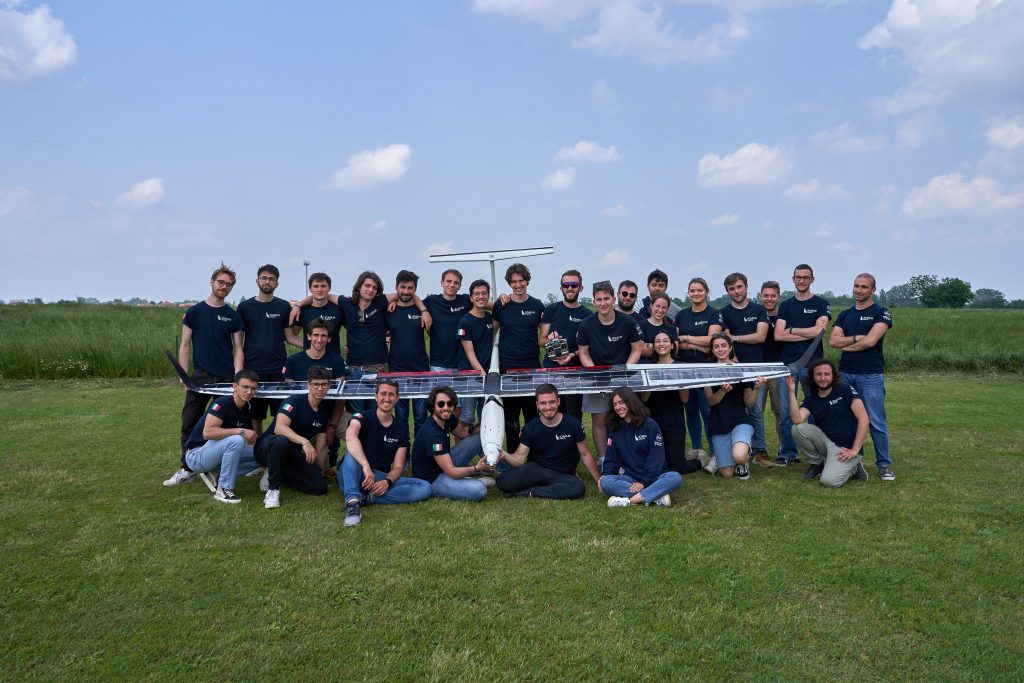Ra project
Design and construction of a sustainable aircraft with unlimited autonomy. This Unmanned Aerial Vehicle is completely electric and powered solely by solar panels.
Record Aircraft (RA), born in 2017, is an ambitious project that is part of the current industrial and energy development: this UAV relies on solar energy that powers the electric motor and the other aircraft systems. In this way RA is completely carbon neutral. To capture the sun energy RA is equipped with high-efficiency solar panels and secondary batteries charged in daylight to power overnight flight. Its structure has been designed to be innovative and the aircraft is built with carbon fiber composites to minimize the weight and maximize the strength at the same time. The ability to harvest solar energy and to store it into a rechargeable energy storage system allows the aircraft to fly with unlimited autonomy. The long term goal is to fly across the Atlantic Ocean.
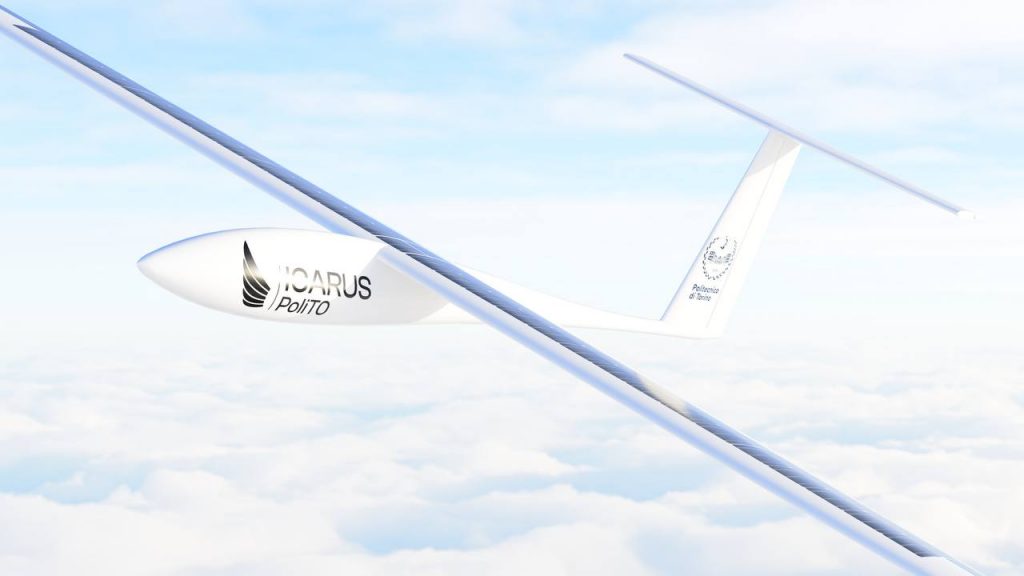
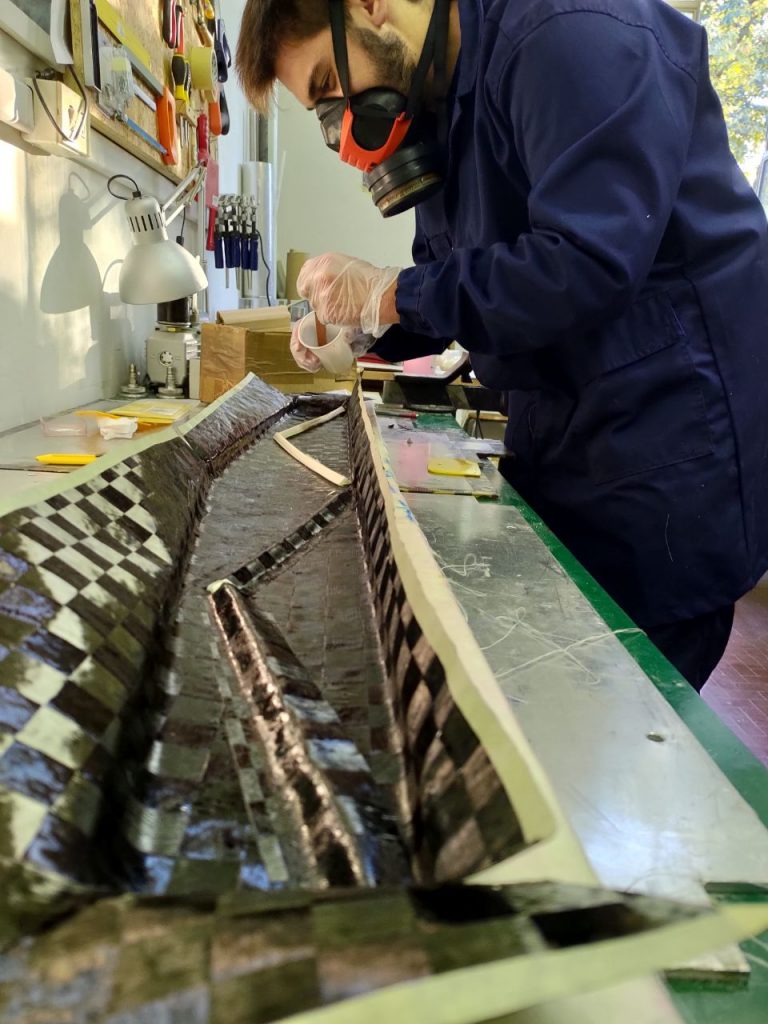
In the last academic year the students start building the first prototype after years of projects and simulations: aerodynamics, flight mechanics, structure and electrical systems are being designed to maximize the performance of the aircraft.
The structure is very close to a glider, with a high aspect ratio to maximize the flight efficiency; the airfoil has been chosen to maximize the amount of solar energy captured by the solar cell; the wing surface has been designed to place about 1 sqm of solar cell.
The propeller has been chosen to work optimally at the cruise flight condition of the aircraft to reduce the required power for the flight and to give enough thrust to fly at 20 m/s. The engine has been chosen to give enough power for the take off and to work optimally in the cruise condition.
The structure is mainly in carbon fiber composite to obtain a low weight and high resistance aircraft; furthermore, work with composite allows designing a structure that is innovative and difficult to develop with traditional materials.
Thanks to the IT area, the on-board systems are equipped with electric components that are designed to collect the maximum power from the solar panels and limit battery discharge.
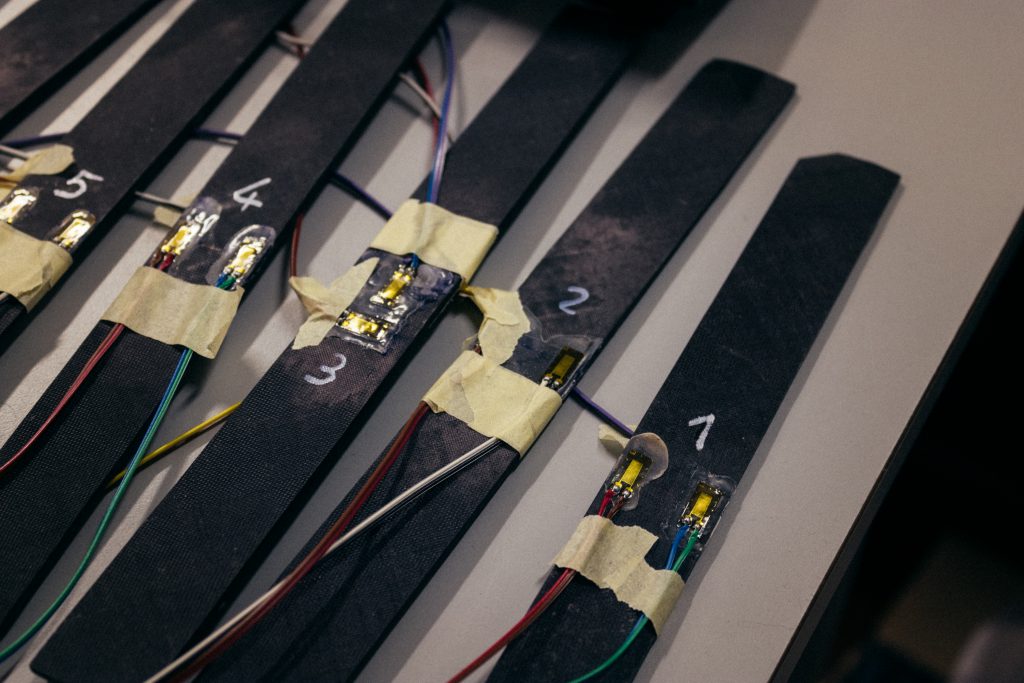

In this academic year, the students will be ending the building of the first prototype named Amelia FP (First Prototype): this will allow them to make some flight tests to verify if the developed models correspond to the built aircraft. They will start by making the last test on the engine and propeller chosen to verify that they work in the correct way predicted and by 2022 the first flight test will be executed to collect the flight data that will be confronted with the ones calculated by the developed models. This will help to design the autopilot that will be equipped in RA’s aircraft and that will let it fly independently.
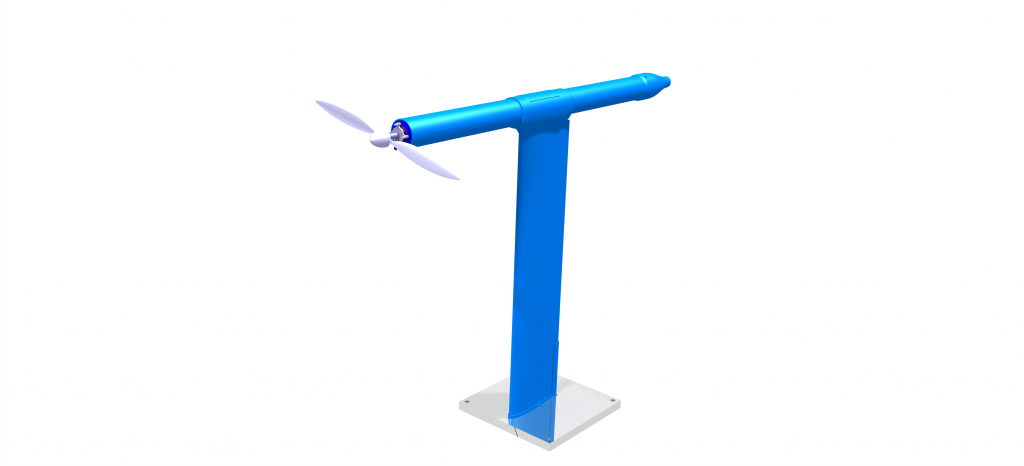
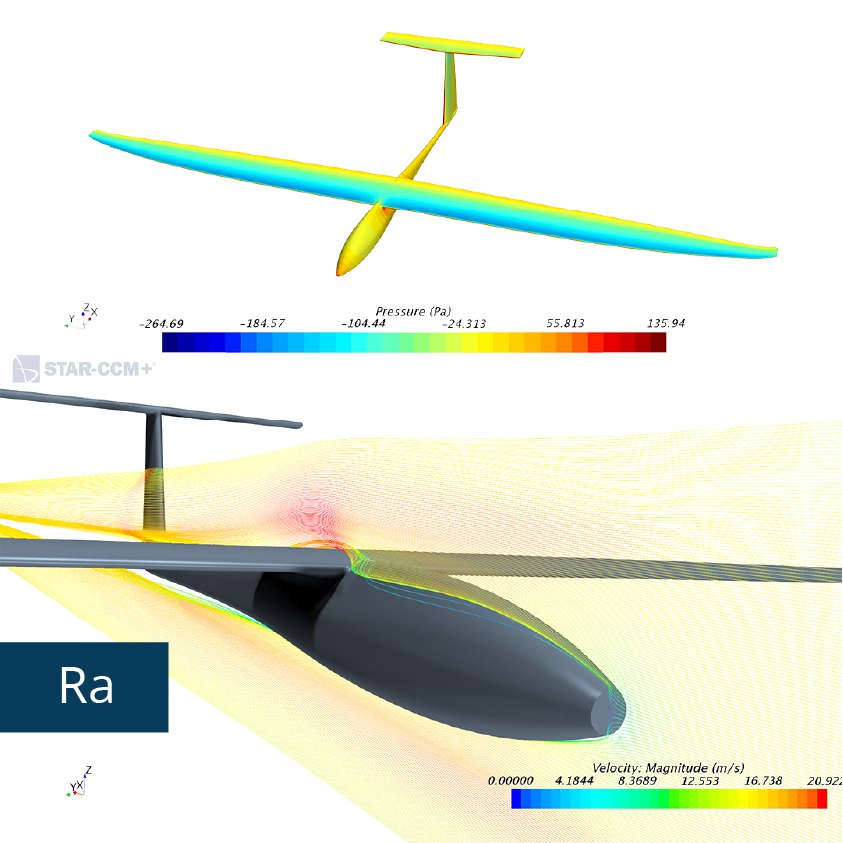
The computational fluid dynamics (CFD) analysis are an important instrument for understanding if the aerodynamic behaviour of the aircraft is correct. In the images beside the analysis of diferrent part of the aircraft are shown: this analysis has been made in still air and accelerated flow.
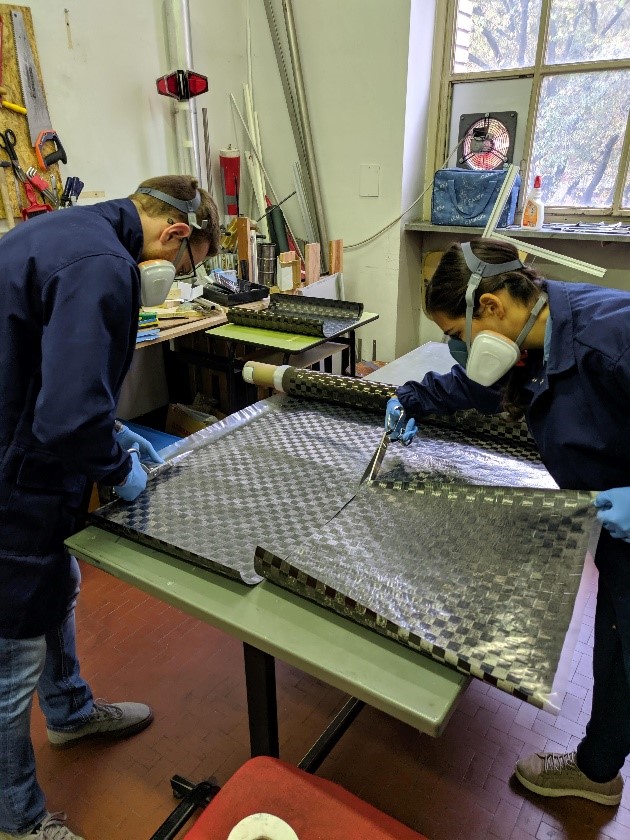
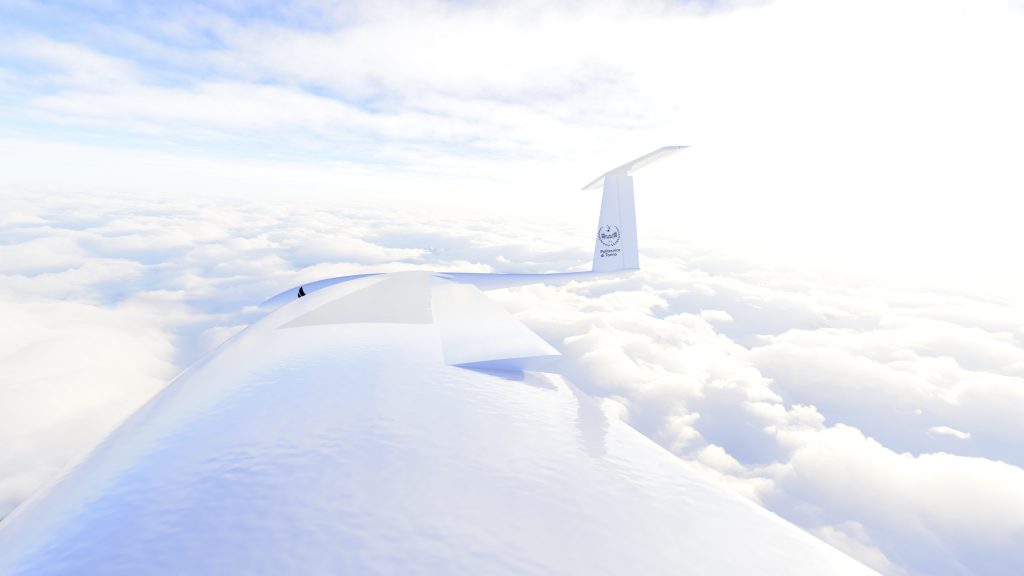
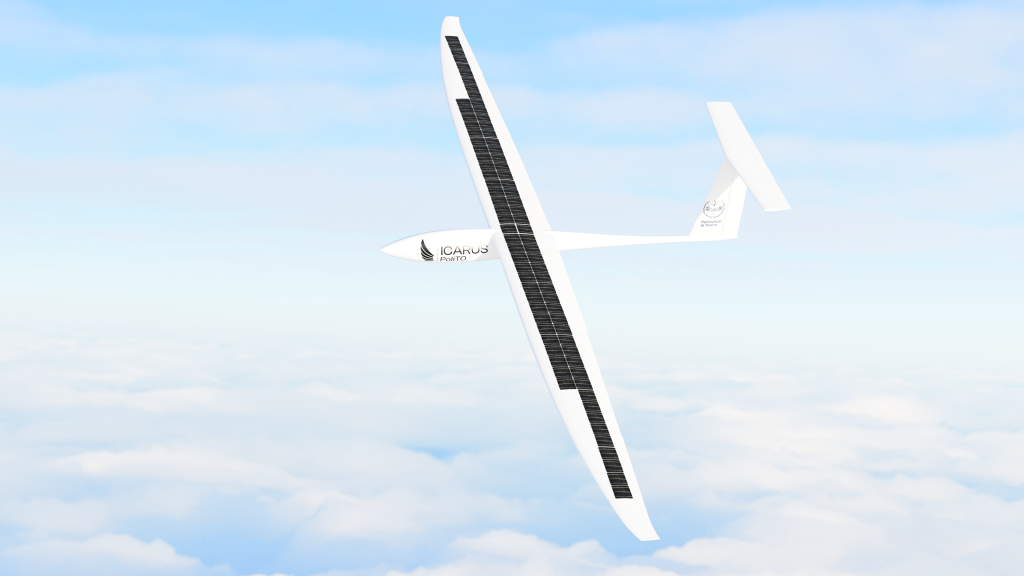
In 2022, the first prototype of the RA project, Amelia FP (First Prototipe), made its first flight.
See how the development is evolving here.
